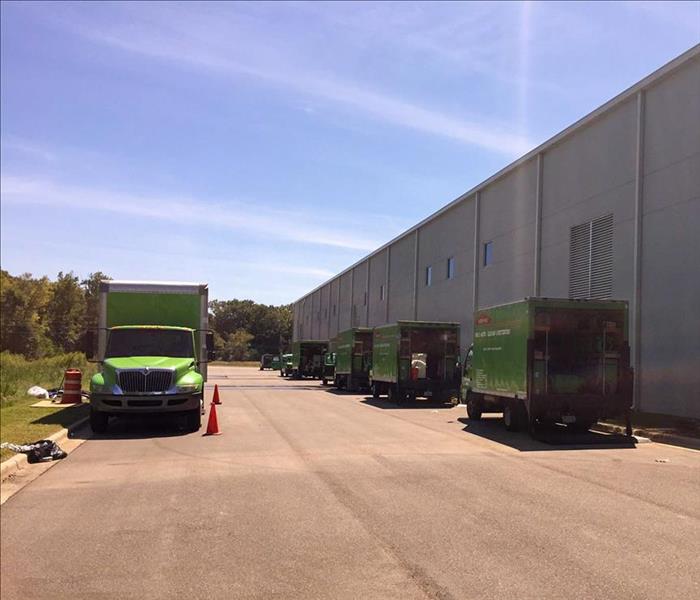Steps of the Sewer Damage Cleaning Process
9/7/2021 (Permalink)
If your commercial building in DeKalb, GA, has sewer damage, the cleaning process is more involved than regular water damage. Because sewage is considered one of the more hazardous types of Category 3 water, extra precautions must be taken to deal with it safely. The following steps outline the sewer cleanup procedure taken by certified restoration technicians.
1. Wearing Personal Protective Equipment
Before entering the space affected by sewer backup, technicians must don their PPE. This includes coveralls that protect skin and face masks and respirators to protect eyes, noses, mouths, and lungs. Waterproof gloves and rubber boots are worn to protect hands and feet.
2. Identifying Source of Problem
Before sewer cleanup can start, the problem must be identified and stopped. For example, a flooded toilet can be unclogged, and a broken pipe can be repaired. Once the source of the sewage has been thwarted, then the cleaning process begins.
3. Containing Items and the Area
Items that are affected by the sewage must be bagged for later assessment. The area must be sealed off from surrounding areas so that secondary damage does not occur.
4. Drying the Area
The standing water with sewage in it must be extracted from the area. Technicians will likely use industrial pumps to remove and contain the water. Then all surfaces must be dried.
5. Disinfecting the Area
Industrial strength cleaners that kill bacteria and harmful microbes are used to completely disinfect the area. Because sewage is such a harsh contaminant, surface testing must be completed to ensure that the cleaners worked.
6. Repairing Structure and Items
Walls, floors, ceilings and items that are destroyed must be thrown away. Everything else must be cleaned and repaired before people can enter the area again. For example, walls that were torn out must be replaced, and items that were dirty must be sanitized. Only then is the restoration complete.
If you need sewer cleanup in your building, there will be more steps than if the damage was from clean water. Knowing the process can help you understand the timeline for completing it.





 24/7 Emergency Service
24/7 Emergency Service